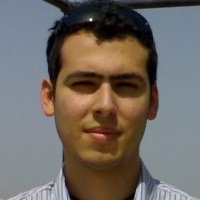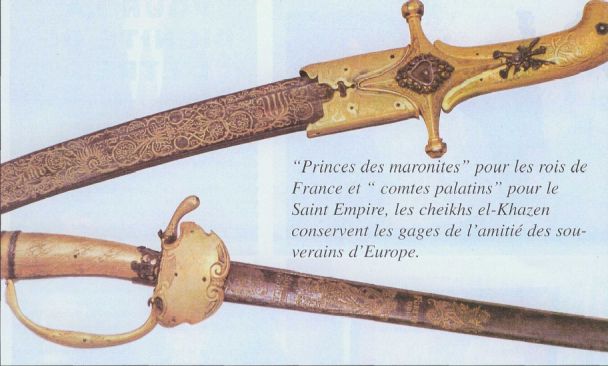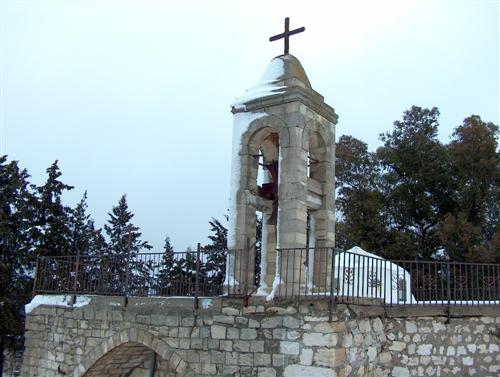انا مغترب ………ولكن…….. "انا عايش برا,انا بسافر ,انا بشتغل بالسعودية,انا بالخليج,انا بأميركا,أنا,أنا ………."لطالما دوت أصداء تلك الكلمات في أّذاننا واينما وجدنا …

والكتاب المقدس يخبرنا أن المسيح قد صالحنا مع الله. وحقيقة احتياجنا للمصالحة مع الله توضح انقطاع علاقتنا مع الله. وحيث أن الله قدوس، فإن اللوم يقع علينا. فخطيئتنا فصلتنا عن الله. يخبرنابولس أننا كنا في عداوة مع الله: "لأنه إن كنا ونحن اعداء قد صولحنا مع الله بموت ابنه. فبالأولي كثيراً ونحن مصالحون نخلص بحياته".
فعندما مات المسيح من أجلنا على الصليب، حمل عنا حكم الله وأعطانا سلام مع الله. "فمصالحتنا مع الله"، اذاً، تتضمن قبولنا نعمة الله ومغفرة خطايانا. وكننتيجة لتضحية المسيح، فإن العداء تحول الى علاقة صداقة ومحبة. والمصالحة هي حقيقة مجيدة، فقد كنا أعداء الله والأن نحن أصدقاؤه. ولقد كان محكوم علينا بالموت بسبب خطايانا ولكن الآن قد غفرت لنا خطايانا. ولقد كنا في حرب مع الله، ولكن لنا الآن السلام الذي يفوق كل عقل.
By JUDITH H. DOBRZYNSKI
Sidon, a port city about 25 miles south of Beirut whose rich history dates to 4000 B.C., was among the most successful of the Phoenician city-states. In the fourth century B.C., it fell to Alexander the Great, entering a Hellenistic age that lasted for more than 100 years until the Romans took over. It changed hands several more times before becoming part of the Ottoman Empire in the 17th century.
So it is not surprising that when, in the mid-1800s, archaeologists started exploring Sidon, they found treasures. The French turned up (among other things) a sarcophagus that belonged to a Phoenician king named Eshmunazar II and sent it back to the Louvre. Later, a Turk named Osman Hamdi Bey, who had studied in Paris, became director of the Archaeological Museum in Istanbul and began leading his own excavations in Sidon. In 1887, his team hit upon more than two dozen sarcophagi. Many were stunning, including the Sarcophagus of Mourning Women, which shows 18 comely, elegant females in varying expressions of grief; it’s now in the Istanbul museum.
Khazen History


Historical Feature:
Churches and Monasteries of the Khazen family

St. Anthony of Padua Church in Ballouneh
Mar Abda Church in Bakaatit Kanaan
Saint Michael Church in Bkaatouta
Saint Therese Church in Qolayaat
Saint Simeon Stylites (مار سمعان العامودي) Church In Ajaltoun
Virgin Mary Church (سيدة المعونات) in Sheilé
Assumption of Mary Church in Ballouneh
1 - The sword of the Maronite Prince
2 - LES KHAZEN CONSULS DE FRANCE
3 - LES MARONITES & LES KHAZEN
4 - LES MAAN & LES KHAZEN
5 - ORIGINE DE LA FAMILLE
Population Movements to Keserwan - The Khazens and The Maans
ما جاء عن الثورة في المقاطعة الكسروانية
ثورة أهالي كسروان على المشايخ الخوازنة وأسبابها
Origins of the "Prince of Maronite" Title
Growing diversity: the Khazin sheiks and the clergy in the first decades of the 18th century
Historical Members:
Barbar Beik El Khazen [English]
Patriach Toubia Kaiss El Khazen(Biography & Life Part1 Part2) (Arabic)
Patriach Youssef Dargham El Khazen (Cont'd)
Cheikh Bishara Jafal El Khazen
Patriarch Youssef Raji El Khazen
The Martyrs Cheikh Philippe & Cheikh Farid El Khazen
Cheikh Nawfal El Khazen (Consul De France)
Cheikh Hossun El Khazen (Consul De France)
Cheikh Abou-Nawfal El Khazen (Consul De France)
Cheikh Francis Abee Nader & his son Yousef
Cheikh Abou-Kanso El Khazen (Consul De France)
Cheikh Abou Nader El Khazen
Cheikh Chafic El Khazen
Cheikh Keserwan El Khazen
Cheikh Serhal El Khazen [English]
Cheikh Rafiq El Khazen [English]
Cheikh Hanna El Khazen
Cheikha Arzi El Khazen
Marie El Khazen